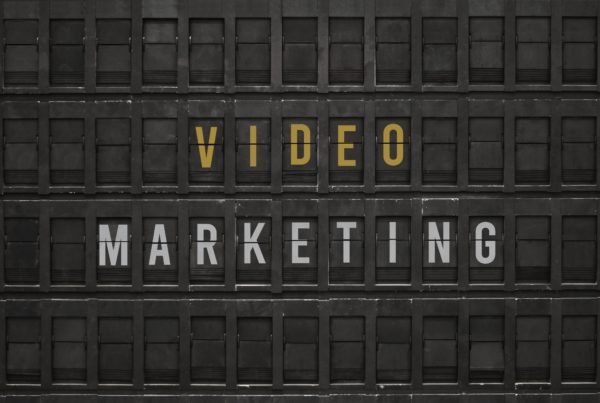In the digital age, businesses and marketers alike are continually striving to find ways to optimize their online advertising efforts. It’s a complex world, filled with intricate strategies, continuously changing algorithms, and a multitude of platforms. In this comprehensive guide, we will delve into the details of digital advertising and how to make the most out of your campaigns.
The Importance of Understanding Your Target Audience
One of the fundamental aspects of successful digital advertising is understanding your target audience. It’s not just about knowing their age, location, or interests. It’s about understanding their behavior, their needs, and their online habits. This knowledge will allow you to create more targeted and effective ad campaigns.
Understanding your audience also involves identifying their pain points. What problems are they facing that your product or service can solve? The more you understand about your audience, the more effective you can be in crafting messages that resonate with them and prompt them to take action.
Ad Copy and Its Power
Your ad copy is a significant factor in the success of your digital advertising campaigns. It’s not just about crafting a catchy headline; it’s about creating a compelling message that engages your audience and compels them to take action.
A well-crafted ad copy should be concise, compelling, and clear. It should communicate your value proposition and create a sense of urgency. Most importantly, it should include a clear call-to-action. This tells your audience exactly what you want them to do, whether it’s to click on your ad, sign up for a newsletter, or make a purchase.
The Role of Creatives in Digital Advertising
Creatives, including images and videos, play a vital role in your digital advertising campaigns. A well-designed visual can catch your audience’s attention, help communicate your message more effectively, and ultimately, increase your ad’s performance.
In this respect, A/B testing is a valuable tool. By testing different creatives, you can identify what resonates best with your target audience and optimize your campaigns accordingly.
Understanding Ad Performance Metrics
Monitoring and understanding your ad performance metrics is crucial for optimizing your digital advertising efforts. This includes metrics like impressions, click-through rate (CTR), and conversion rate. These metrics provide valuable insights into how your ads are performing and where there’s room for improvement.
For instance, a low CTR might indicate that your ad is not engaging enough or not reaching the right audience. On the other hand, a low conversion rate might suggest that your landing page needs optimization.
The Power of Facebook Advertising
Facebook advertising offers a powerful platform for reaching a broad and engaged audience. It provides a variety of ad formats and detailed targeting options, making it a valuable tool for businesses of all sizes and industries.
One of the key advantages of Facebook advertising is its detailed targeting options. You can target your ads based on demographics, interests, behavior, and more. This allows you to reach the right people at the right time and increase the effectiveness of your ad campaigns.
The Importance of Ad Campaign Objectives
The first step in setting up a Facebook ad campaign is choosing your campaign objective. This is what you want people to do when they see your ads. It could be anything from increasing brand awareness to driving website traffic or increasing conversions.
Your campaign objective informs Facebook’s ad delivery system and helps it optimize your ads to reach people most likely to take your desired action. Therefore, choosing the right objective is crucial for the success of your campaign.
The Power of Facebook’s Algorithm
Understanding Facebook’s ad algorithm is key to optimizing your ad campaigns. The algorithm decides which ads to show to which people, based on a variety of factors. These include relevance score, bid amount, and ad quality.
Leveraging the Power of Retargeting
Retargeting, also known as remarketing, is a powerful advertising strategy that involves targeting people who have previously interacted with your brand. This can include people who have visited your website, used your app, or engaged with your content on social media.
Retargeting is especially effective because it targets people who have already expressed an interest in your brand. This makes them more likely to engage with your ads and convert.
Facebook, for instance, provides several retargeting options. You can use Facebook Pixel, a piece of code that you install on your website, to track visitor behavior and retarget them later with specific ads.
Value of a Self-Liquidating Offer
In the context of digital advertising, a self-liquidating offer is a pricing strategy where the cost of acquiring a customer is offset by the initial purchase that the customer makes. The goal isn’t to make a significant profit from the first transaction but rather to acquire a customer without net cost.
The real value of a self-liquidating offer is in the potential for repeat business from customers. Once you’ve acquired a customer, you have the opportunity to sell to them again in the future, hopefully at a higher profit margin.
Utilizing Customer Reviews
Customer reviews are an invaluable resource in the digital advertising world. Not only do they provide social proof and increase your brand’s credibility, but they can also improve your SEO and increase your online visibility. Encouraging customers to leave reviews, therefore, can be a beneficial strategy to enhance your digital advertising efforts.
In the end, digital advertising success boils down to understanding your audience, crafting compelling ad copy and creatives, monitoring your ad performance metrics, leveraging the power of platforms like Facebook, and utilizing strategies such as retargeting and self-liquidating offers.
Remember, the world of digital advertising is continuously evolving. Staying informed and being adaptable are the keys to staying ahead of the curve. Keep testing, analyzing, and refining your strategies, and over time, you’ll see your efforts pay off.
The Role of Templates in Digital Advertising
Templates play an essential role in digital advertising. They provide a roadmap for creating ads that resonate with your target audience and achieve your marketing goals. Templates are particularly useful for businesses that are new to digital advertising. They save time and resources and help avoid common pitfalls that can derail an advertising campaign.
Most advertising platforms, including Facebook and Google, offer a range of templates that advertisers can use as a starting point for their ads. These templates are usually customizable, allowing advertisers to add their branding, images, and copy.
Sharing templates is also an easy process in most platforms. For instance, in Apex, you can share a template by simply clicking on the ‘share’ button and copying the generated link. This feature can be particularly useful when collaborating with team members or clients.
The Importance of Understanding Cost Per Lead
Understanding the cost per lead is crucial in digital advertising. This metric reflects the amount of money you’re spending to acquire each lead and plays a key role in assessing the profitability of your campaigns.
The cost per lead can vary depending on several factors, including the nature of the offer, the target demographic, and the competition in the market. However, having a ballpark figure can help set realistic expectations and guide your campaign budgeting.
For instance, if you’re running a campaign offering an AC tune-up service priced between $49 to $79, you might expect the cost per lead to be in the $30 to $40 range. This is based on the principle of a self-liquidating offer, where the aim is not to make a significant profit from the initial transaction but to acquire a customer.
Tackling Ad Fatigue
Ad fatigue is a common challenge in digital advertising. It happens when your target audience sees your ads so frequently that they start to ignore them, leading to a drop in ad performance.
One way to tackle ad fatigue is to refresh your ad creatives regularly. However, it’s important to create a new ad instead of simply modifying the existing one. This is because major changes to an ad can make Facebook’s algorithm treat it as a new campaign, discarding the ad’s history and starting fresh with data collection. By duplicating the ad and making changes to the duplicate, you can compare the performance of the new and old versions more accurately.
Leveraging Current Customers
It’s easy to focus on acquiring new customers and overlook the potential of existing ones. However, retaining current customers and encouraging repeat purchases can be more cost-effective than constantly hunting for new customers.
The key here is to maximize the value of each customer. You can do this by offering upsells or cross-sells, running loyalty programs, or providing excellent customer service that encourages repeat business. Also, remember to communicate regularly with your customers through follow-up messages, newsletters, or social media.
In conclusion, digital advertising involves much more than simply creating an ad and waiting for the results. It requires a deep understanding of your audience, a clear strategy, ongoing optimization, and a focus on both acquisition and retention. By mastering these elements, you can create successful advertising campaigns that drive growth for your business.





